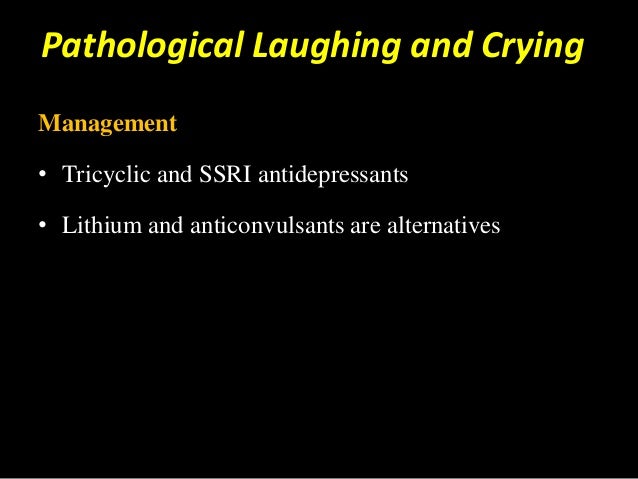
Effects of high frequency repetitive magnetics stimulation on function in subacute stroke patients. The neuro-regeneration effect of peripheral nerve stimulation and rTMS in SCI induced rats. Acupuncture enhances effective connectivity between cerebellum and primary sensorimotor cortex in patients with stable recovery stroke. Korean J Oriental Physiology and Pathology. Study of clinical research acupuncture treatment on post-stroke depression. Mechanisms of acupuncture therapy for cerebral ischemia: an evidence-based review of clinical and animal studies on cerebral ischemia. Zhu W, Ye Y, Liu Y, Wang XR, Shi GX, Zhang S, Liu CZ.A review of systems and networks of the limbic forebrain/limbic midbrain. Pathological laughter and crying: a link to the cerebellum. Parvizi J, Anderson SW, Martin CO, Damasio H, Damasio AR.Involuntary motor phenomena in the locked-in syndrome. Psychiatric symptoms as late onset of Wilson's disease: neuroradiological findings, clinical features and treatment. Keller R, Torta R, Lagget M, Crasto S, Bergamasco B.Tentorial meningioma associated with pathological laughter-case report. Tsutsumi S, Hatashita S, Kadota Y, Abe K, Ueno H.Neuroimaging of serotonin transporters in post-stroke pathological crying.

Murai T, Barthel H, Berrouschot J, Sorger D, von Cramon DY, Muller U.Pathological laughter in a patient with Rathke cleft cyst. Differential deposition of manganese in the rat brain following subchronic exposure to manganese: a T1-weighted magnetic resonance imaging study. Finkelstein Y, Zhang N, Fitsanakis VA, Avison MJ, Gore JC, Aschner M.Proximal dentatothalamocortical tract involvement in posterior fossa syndrome. Morris EB, Phillips NS, Laningham FH, Patay Z, Gajjar A, Wallace D, Boop F, Sanford R, Ness KK, Ogg RJ.Development of the Korean version of Modified Bathel Index (K-MBI): multi-center study for subjects with stroke. Jung HY, Park BK, Shin HS, Kang YK, Pyun SB, Paik NJ, Kim SH, Kim TH, Han TR.Korean version of the Scale for the Assessment and Rating of Ataxia in ataxic stroke patients. Kim BR, Lee JY, Kim MJ, Jung HJ, Lee JM.Pathological laughing and crying following stroke: validation of a measurement scale and a double-blind treatment study. Robinson RG, Parikh RM, Lipsey JR, Starkstein SE, Price TR.Pathological laughter as a symptom of midbrain infarction. Dabby R, Watemberg N, Lampl Y, Eilam A, Rapaport A, Sadeh M.Pathological laughter associated with paroxysmal kinesigenic dyskinesia: a rare presentation of acute disseminated encephalomyelitis. Chaudhry N, Puri V, Patidar Y, Khwaja GA.Technique of neurologic examination and process for localization in clinical neurology. Neuroanatomy of pathological laughing and crying: a report of the American Neuropsychiatric Association Committee on research. Parvizi J, Coburn KL, Shillcutt SD, Coffey CE, Lauterbach EC, Mendez MF.Toward a more precise, clinically-infomed pathophysiology of pathological laughing and crying. Lauterbach EC, Cummings JL, Kuppuswamy PS.Journal of Stroke and Cerebrovascular Disease. Clinical features and related factors of poststroke pathological laughing and crying: a case-control study. Wang GY, Teng F, Chen YH, Liu Y, Li Y, Cai L, Zhang X, Nie Z, Jin L.Korean Journal of Psychosomatic Medicine. Pathological laughing and crying: pathophysiology and treatment. To define exact mechanism and find effective treatment, further studies are needed. And we have considered mechanism of PLC associated with midbrain lesion, dysfunction of cortex-thalamus-hypothalamus-basal ganglia-mesencephalon and faciorespiratory nuclei pathways, cerebro-ponto-cerebellar pathways and damaged serotonergic neurotransmission can cause this based on recent neurobiology of emotion.

Treatment of traditional Korean Medicine could be effective for stoke rehabilitation including post-stroke PLC. After 6 weeks treatment, Pathological Laughter and Crying Scale (PLACS), Korean version of the Scale for the Assessment and Rating of Ataxia (K-SARA) are decreased and Korean version of Modified Barthel Index (K-MBI) is increased. She was treated by acupuncture, pulsed electromagnetic therapy (PEMT).

We recently experienced a 51-year-old woman who were diagnosed as PLC after midbrain infarction. Midbrain involvement causing PLC is extremely unusual and the exact mechanism by which this condition develops is poorly understood.

PLC is an uncommon symptom usually caused by cerebral lesions. Pathological laughing and crying (PLC) is a condition defined by relatively uncontrollable episodes of laughter, crying or both.


 0 kommentar(er)
0 kommentar(er)
